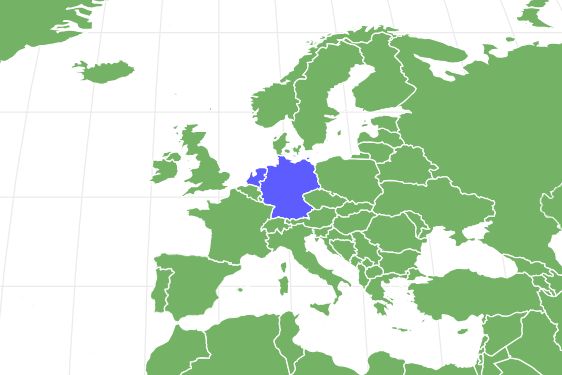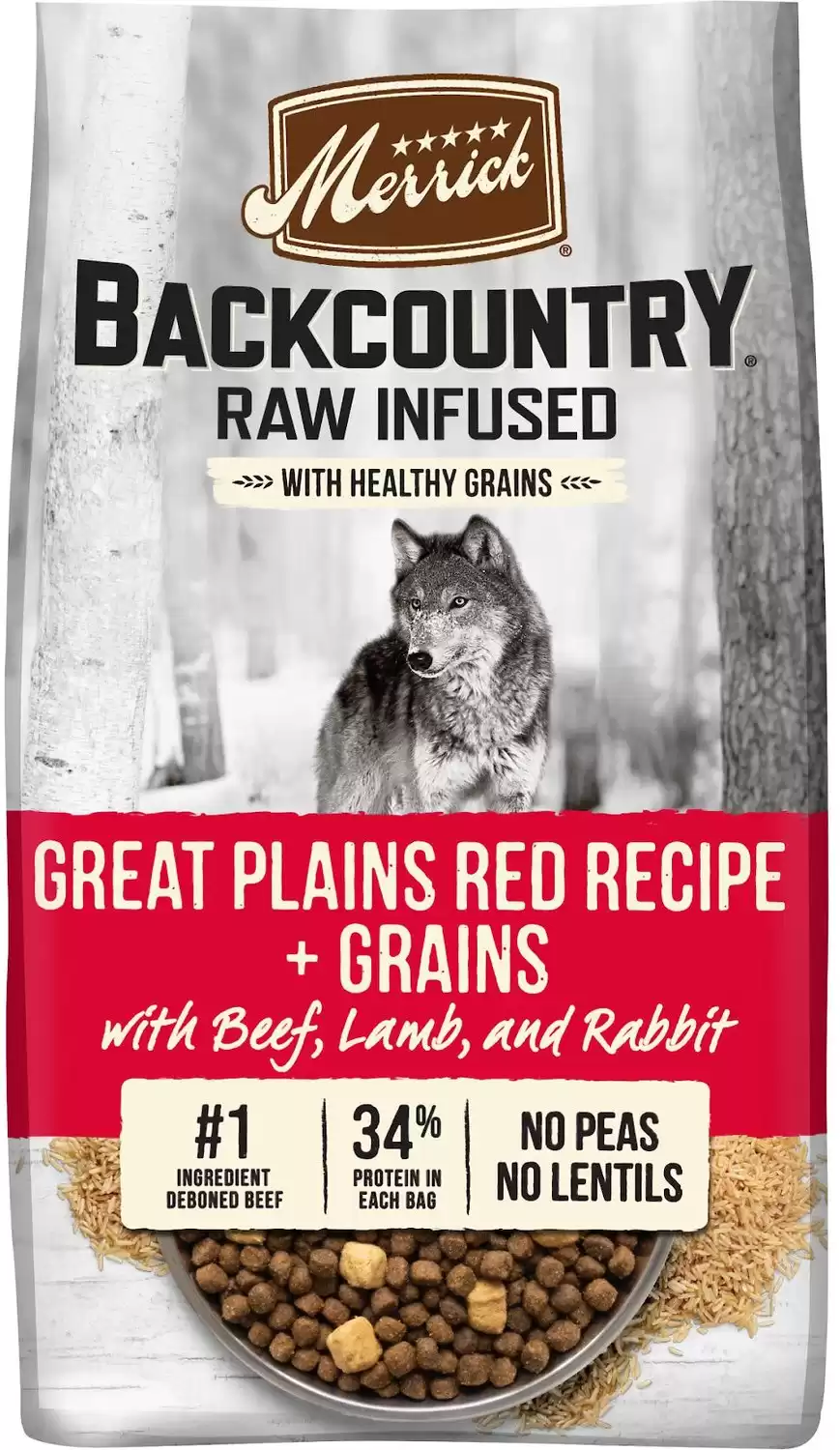Keeshond
canis lupus familiaris
Friendly, alert dogs that are loyal to their owners
Advertisement
Keeshond Facts
- Diet
- Omnivore
Keeshond as a Pet:
- General Health
- Energy Level
- Shedability
- Trainability
- Intelligence
- Tendency to Chew
- Size
- Family and kid friendliness
- Yappiness / Barking
- High
- Separation Anxiety
- High
- Preferred Temperature
- Cold climate
- Exercise Needs
- Moderate
- Friendly With Other Dogs
- High
- Pure bred cost to own
- $1,000-$4,000
- Dog group
- Non-sporting
- Male weight
- 35-45 lbs
- Female weight
- 35-45 lbs
This post may contain affiliate links to our partners like Chewy, Amazon, and others. Purchasing through these helps us further the A-Z Animals mission to educate about the world's species.
View all of the Keeshond images!
Keeshonds are friendly, alert dogs that are loyal to their owners.
When pronouncing the word ‘keeshond,’ remember it sounds like you’re saying the words ‘case haunt.’ This medium-sized canine has a thick double coat and dark, searching eyes.
See all of our expert product reviews.
The history of the keeshond dates back to the 18th century. This dog was a companion and mouse hunter on Dutch ships sailing through manmade waterways. During that time, this dog was used as a symbol of the Dutch Patriots Party. It was considered a breed of the common people as opposed to a canine that would belong to a member of the royal family in the House of Orange.
This family-friendly, energetic dog belongs to the non-sporting group and loves to be wherever the action is happening!
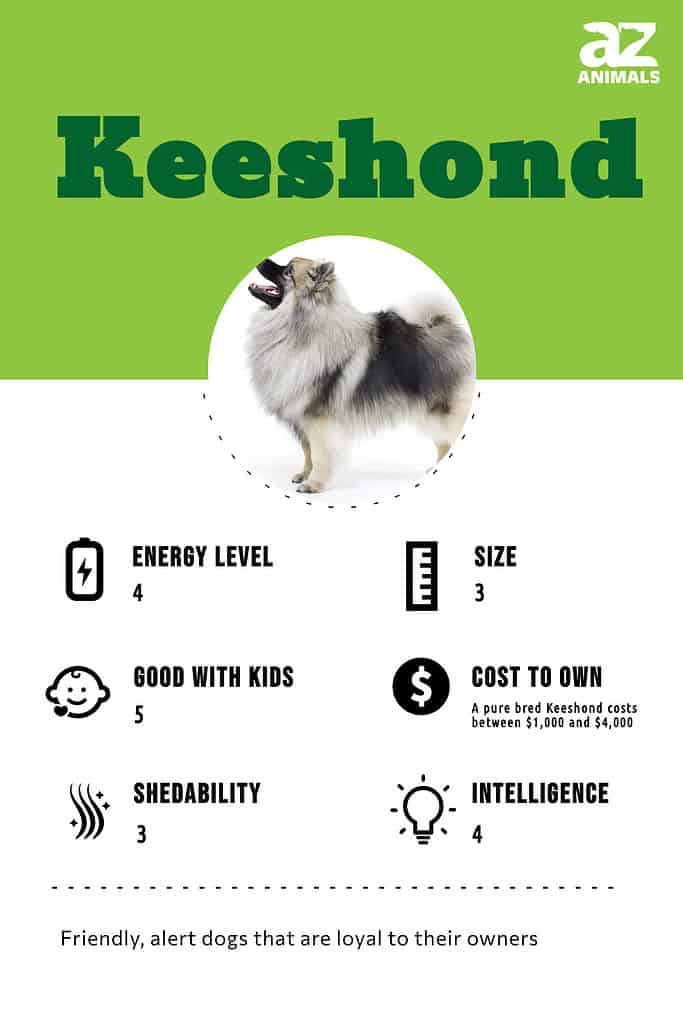
3 Pros and Cons of Owning a Keeshond
| Pros! | Cons! |
| A great guard dog A keeshond is protective of its household. This dog will bark when someone knocks at the door or rings the bell. | High-maintenance grooming routine Keeshonds have a thick double coat of fur. This means they require more grooming attention than many other dogs. |
| Good with children These dogs are playful with an affectionate temperament. They love running around with kids, fetching items and being a part of the fun. They mix well with other dogs, too. | Separation Anxiety This breed is prone to separation anxiety when left for an extended period of time. They may chew or otherwise destroy items in a home due to the stress of being alone. |
| Easy to train Keeshonds are intelligent, alert dogs that pick up obedience lessons very quickly. They are known as people pleasers. | Heavy shedders Twice per year, keeshonds shed a lot of hair from their undercoat. These periods of shedding can last for three weeks. |
Size and Weight
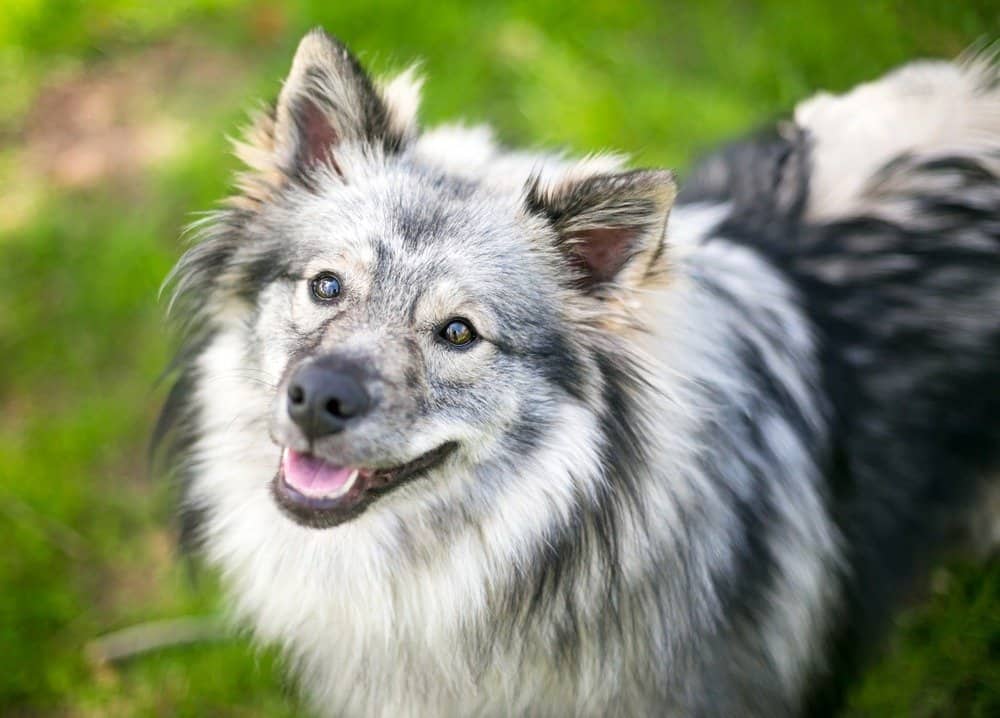
Both male and female Keeshonds are capable of weighing up to 45 lbs when fully grown
©Mary Swift/Shutterstock.com
A male is 18 inches tall at the withers whereas a female is 17 inches tall. Both males and females of this breed weigh 45lbs fully grown. A 7-week-old puppy weighs around 8lbs. This breed is fully grown at 2 years old.
Health and Entertainment for your Keeshond
See all of our expert product reviews.
| Height | Weight | |
| Male | 18 inches | 45 lbs |
| Female | 17 inches | 45 lbs |
Origins

The Keeshond is named after a Dutch politician who opposed the ruling house during the 18th century
©Anastasiya Tsiasemnikava/Shutterstock.com
The tale of the Keeshond is one of an ebb and flow of fortunes. During the 1700s and the 1800s, the canine known for its abundant coat and intimidating bark kept watch over the barges that plied Holland’s waterways in their numbers. In time, it also became the symbol of the opposition which stood against the ruling House of Orange. As a matter of fact, the name of the breed is believed to derive from Cornelis (Kees) de Gyselaer, the leader of the opposition. However, the House of Orange emerged the victor in that conflict and the Keeshond saw its popularity plummet.
The early part of the 20th-century marked a turning point for the breed. Following a visit to the Netherlands, in1905, Miss Hamilton-Fletcher, brought a number of them back to England, her country of origin with her. She returned to Holland working assiduously with Keeshond owners to ensure the welfare of the canine. By 1915, enthusiasts founded their very own club for the breed. And a decade and a half after that, the Keeshond was recognized by the American Kennel Club.
Common Health Issues
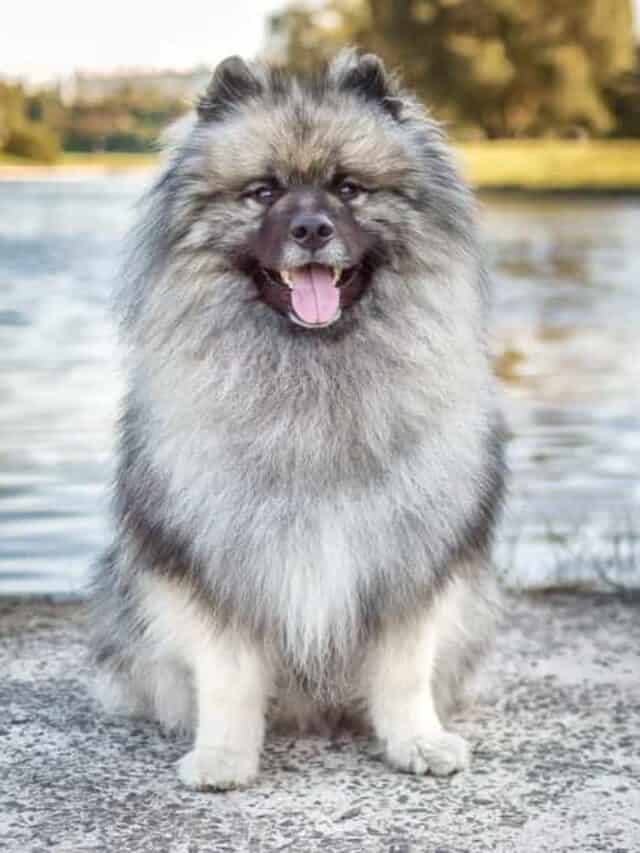
Keeshonds are prone to obesity which may cause heart problems in turn
©Anastasiya Tsiasemnikava/Shutterstock.com
Like most dogs, keeshonds have health issues that are common to their breed. Diabetes is one of those conditions. This is a condition that doesn’t allow the dog to metabolize sugar in the proper way. Weight loss, excessive thirst and increased urination can all be symptoms. This condition can be managed with some extra attention to the dog’s diet and usage of medications. Cataracts are another common health issue for this breed. Cataracts mostly affect older dogs and can cause various degrees of vision loss and blindness. Cataract surgery is a treatment option. Heart disease is another common issue for keeshonds. These dogs are prone to obesity which can contribute to heart issues. Feeding a keeshond, the proper diet and giving it adequate exercise can help to prevent heart issues.
The most common health issues include:
- Diabetes
- Cataracts
- Heart disease
Keeshond Temperament and Behavior
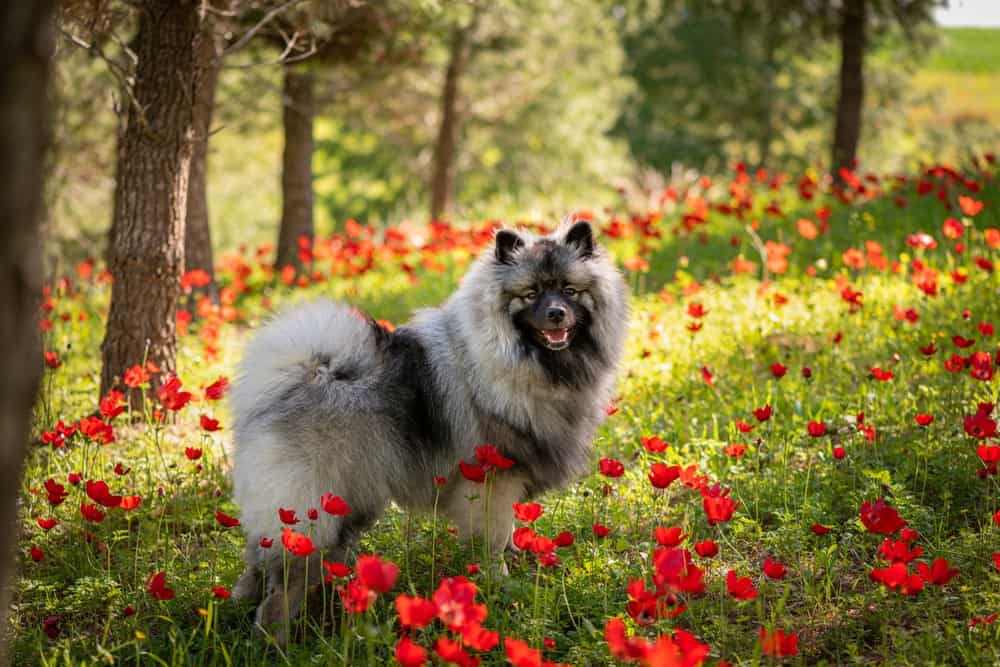
Keeshonds are friendly, affectionate, and easy going. They are also suited to apartment living
©Doczahi/Shutterstock.com
Keeshonds have a friendly personality. They are curious, gentle, and like to be around their family. Not surprisingly, they were originally bred to be companions. They are alert which is a trait that makes them easily trainable.
The one drawback with this breed is its grooming routine. It should be brushed twice weekly to remove tangles as well as loose or dead hair. This process can take up to 30 minutes. Keeping a consistent brushing routine contributes to the health and appearance of its coat.
This canine is a popular choice due to its affectionate nature and obedient behavior. A family looking for an energetic, beautiful dog that loves attention, is likely to be happy with a keeshond.
The Keeshond is considered to be one of the best dog breeds for apartment living.
How to Take Care of a Keeshond
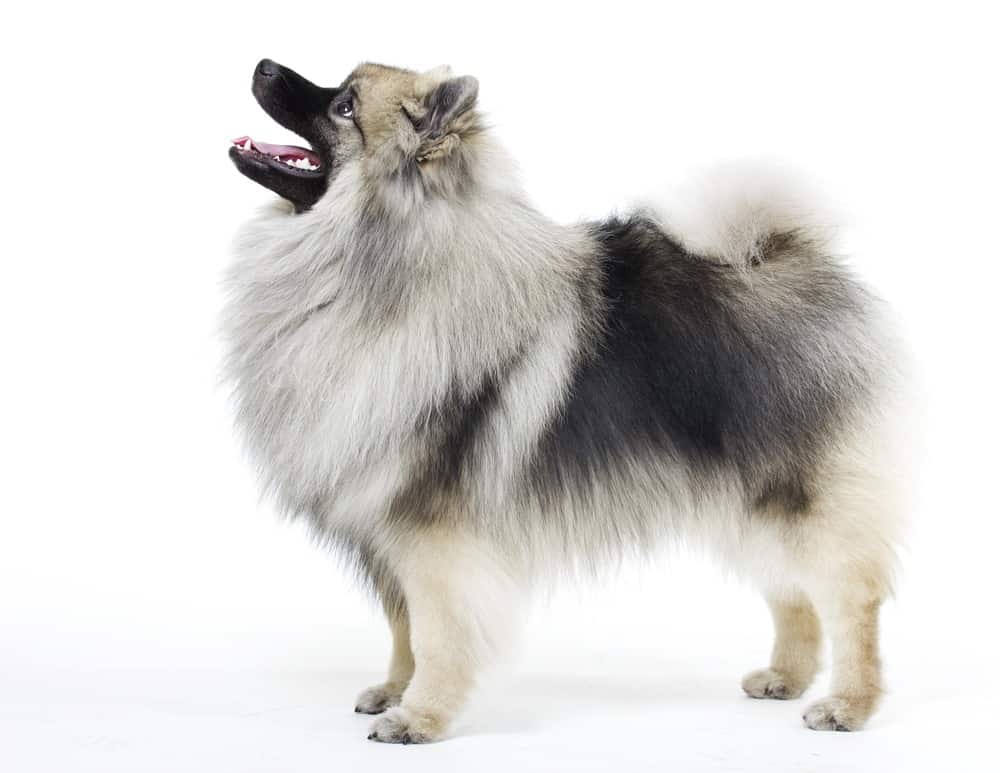
High protein foods which are low in carbohydrates can be an ideal choice for Keeshonds
©Serova_Ekaterina/Shutterstock.com
Learning more about the diet, grooming, health issues, and training requirements of this breed can help an owner give it the best possible care. Whether you choose a puppy or an adult, learn what’s involved in caring for this pet.
The Best Dog Food for Keeshonds
An adult keeshond requires a different type of diet than a puppy. Taking the common health issues of this breed into consideration can help an owner to find a balanced diet for their canine.
Keeshond puppy food: Protein in a keeshond puppy’s diet supports the healthy growth of tissue. Food with a specified amount of carbohydrates gives a puppy energy without adding needless calories. Helping a puppy maintain the proper weight for its age is one way to avoid the development of heart disease. Fat in a puppy’s diet as well as vitamin A helps to support good eye health. Omega 3 fatty acids in a puppy’s diet support vision and brain development. Calcium is important in the development of healthy bones.
Keeshond adult dog food: Protein is essential in an adult keeshond’s diet as well. Fish in an adult canine’s diet provides protein to the canine while not overloading it with carbohydrates. A fish-based diet can keep an adult keeshond’s weight normal and help it to avoid heart disease. Vitamin A contributes to eye health and may prevent the formation of cataracts. Fiber in an adult canine’s diet aids digestion. Calcium supports strong bones and teeth. Also, omega-3 fatty acids contribute to the health of an adult dog’s kidneys and prevent arthritis.
Considering this breed’s specific nutritional needs, A-Z Animals thinks the best dog food for Keeshonds is Merrick Backcountry Raw Infused Healthy Grains Dry Dog Food.
For a dog with a propensity for diabetes, this less processed raw infused high-protein food has the robust nutrition to keep your Keeshond. It’ll have plenty of energy from natural beef and other meats without the excess carbohydrates that spike blood sugar and lead to problems. Additionally, the natural taurine content has the double benefit of protecting heart and eye health.
You can purchase Merrick Backcountry Raw Infused Healthy Grains Dog Food on Chewy or Amazon.
- Freeze-dried raw coated kibble and raw pieces
- Beef, lamb, and rabbit with wholesome grains
- No peas or lentils
Keeshond Maintenance and Grooming

Keeshonds need brushing twice a week, an exercise which may take 30 minutes
©Olga Aniven/Shutterstock.com
How much does a keeshond shed? Overall, keeshonds are known for shedding a moderate amount of hair. However, two times a year they shed more heavily. During these two periods, a keeshond sheds its undercoat, and this shedding continues for about three weeks.
The grooming routine of a keeshond includes brushing it two times per week. This removes dead hair and keeps tangles from turning into mats. It can take up to 30 minutes to thoroughly brush this canine. A slicker brush is helpful in brushing the top layer of hair as well as the undercoat. Be sure the pins of the brush have plastic tips to protect sensitive skin. A wide tooth comb is another useful grooming tool for removing small knots and tangles from fur.
A smaller brush with soft boar’s hair bristles is excellent for brushing a keeshond’s face. It’s gentle and easier to control when brushing around its eyes.
Start brushing the pup at its head and move toward its tail. After moving over the entire coat, mix up the routine a bit by brushing in the opposite direction. This is an easy way to create more fluff!
Bare spots in a keeshond’s coat or red areas of skin can point to allergies. The canine may be allergic to something in its food, its shampoo or perhaps pollen or dust in the air.
A Keeshond’s Tail
A keeshond’s feathery tail curls up over its back in a charming way. A slicker brush can be used on its tail to remove tangles and knots. Once again brushing the hair of its tail in both directions makes it look extra fluffy.
Keeshond Training
Keeshonds are alert, intelligent dogs. Most importantly, they are people pleasers which means they are easy to train. When it comes to training, border collies are similar to keeshonds. Border collies are known for their ability to focus and take in the lessons they are being taught.
Keeshond Exercise
Daily exercise helps to keep keeshonds healthy. These are energetic dogs that like to get outside into the fresh air. A keeshond should have 30 to 40 minutes of exercise daily. These dogs like chasing a ball, running, jumping, and exploring a short trail in a park. These canines are also happy to walk on a leash through the neighborhood to check out the latest happenings in their environment.
Keeshond Puppies
One thing to keep in mind about keeshond puppies is their coat. Even though a puppy’s coat isn’t as thick as an adult canine’s, it should still be groomed to keep it clean and tangle free. This is especially important because puppies are known to roll around on the ground picking up burrs, twigs, and other debris.
Keeshonds and Children
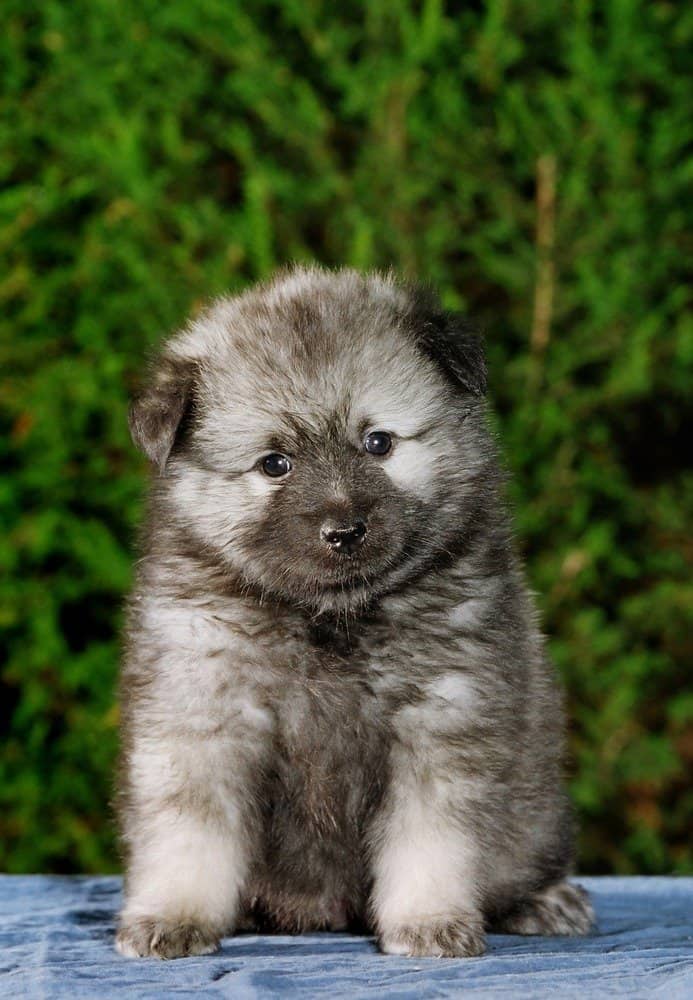
Keeshonds are ideal for small children and are affectionate and playful
©PardoY/Shutterstock.com
Keeshonds are good with kids of all ages. Their affectionate, playful nature fits right in when the kids want to run, play hide and seek or explore the backyard for treasures.
Dogs Similar to Keeshonds
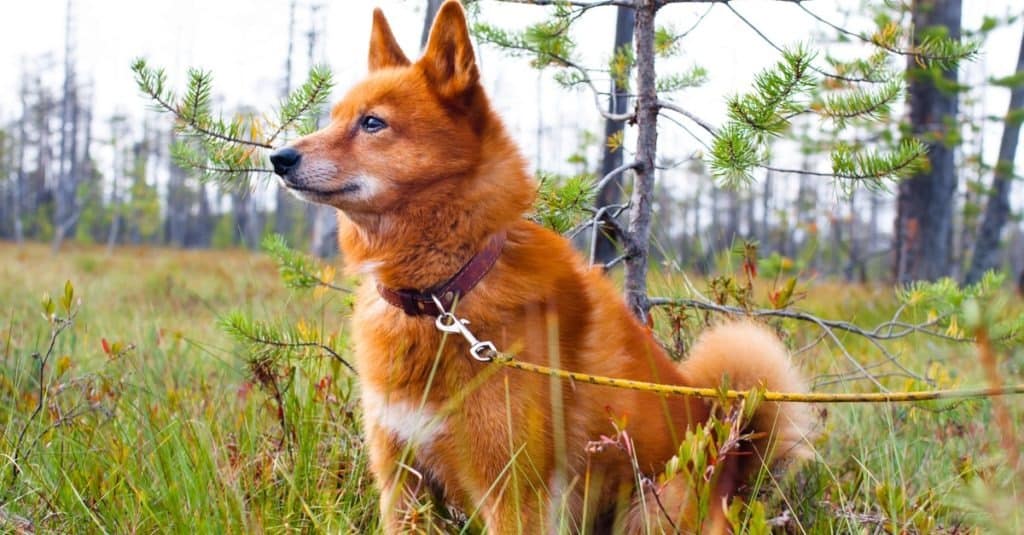
Finnish Spitz are similar to Keeshonds and are as friendly and as energetic
©rodimov/Shutterstock.com
Other dogs similar to this breed include the American Eskimo dog, the Chow Chow, and the Finnish Spitz.
- American Eskimo: The American Eskimo belongs to the non-sporting group and is kid-friendly just like the keeshond. However, this dog has a pure white coat while a keeshond has a mix of tan, black and gray in its coat.
- Chow Chow: A Chow Chow has a fluffy coat like the keeshond and is highly intelligent. A big difference between these two breeds is the Chow Chow is not particularly kid friendly.
- Finnish Spitz: Similar to a keeshond the Finnish Spitz has a face like a fox. It’s every bit as friendly and energetic as a keeshond. But the Finnish Spitz can easily be distracted during an obedience training session.
Popular Names for Keeshond
Popular names for keeshonds include:
- Charlie
- Angel
- Bella
- Princess
- Rudy
- Pax
- Cody
- Bandit
- Lucky
- Misty
Keeshond FAQs (Frequently Asked Questions)
How much does it cost to own a keeshond?
The initial cost of a purebred keeshond ranges from $1000 to $4000. A pup that’s a mix of a keeshond and another dog is going to be less expensive than a purebred.
The yearly costs of veterinary care for a keeshond range from $300 to $500. Of course, if the canine has a health issue, this adds to the cost.
The food costs for this breed range from $50 to $100 per month. The brand and type of pet food an owner chooses will affect the final cost.
Are keeshonds good with kids?
Yes, this breed of dog is good with kids of all ages.
How long does a keeshond live?
The lifespan of a keeshond is 12 to 14 years.
How do you pronounce keeshond?
An easy way to learn the correct pronunciation of keeshond is to remember it sounds like the words, ‘case haunt.’
Do keeshonds shed?
Yes, these dogs shed a moderate amount. However, twice a year, they shed their undercoat which increases the amount of loose hair they drop for a span of about three weeks.
Are keeshonds aggressive?
No, these dogs are not known to be aggressive. Of course, any dog can become aggressive if it feels threatened or feels its puppies are in danger.
Keeshonds are known to have an agreeable temperament.
What breeds make a keeshond?
Keeshonds are descendants of Pomeranians and Samoyeds.
Are keeshonds good family dogs?
Yes. Keeshonds are always up for a fun play time with kids and adults alike. They are social dogs and don’t like to be left alone. A keeshond is more like another member of the family than a pet!
Are Keeshonds herbivores, carnivores, or omnivores?
Keeshonds are Omnivores, meaning they eat both plants and other animals.
What Kingdom do Keeshonds belong to?
Keeshonds belong to the Kingdom Animalia.
What phylum do Keeshonds belong to?
Keeshonds belong to the phylum Chordata.
What class do Keeshonds belong to?
Keeshonds belong to the class Mammalia.
What family do Keeshonds belong to?
Keeshonds belong to the family Canidae.
What order to Keeshonds belong to?
Keeshonds belong to order Carnivora.
What type of covering do Keeshonds have?
Keeshonds are covered in Fur.
What is the scientific name for the Keeshond?
canis lupus familiaris
What is an interesting fact about Keeshonds?
Keeshonds are friendly, alert dogs that are loyal to their owners.
How do Keeshonds have babies?
Keeshonds give birth to live young.
What's the difference between the keeshond and the pomeranian?
The keeshond is much larger than the pomeranian. Plus, these dogs were bred for different purposes, as the keeshond was bred for hunting mice, and the pomeranian was bred for royal companionship.
What's the difference between the keeshond and the samoyed?
The keeshond is smaller than the samoyed, and the samoyed comes in white colors, while the keeshond is usually dark. Additionally, these two dogs were bred for different purposes as well.
Thank you for reading! Have some feedback for us? Contact the AZ Animals editorial team.

